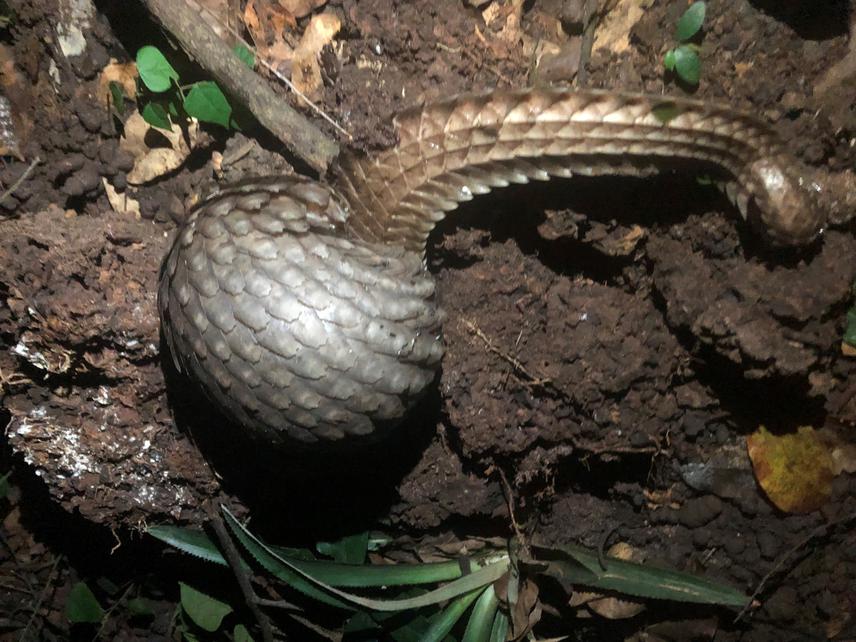Stanislas Zanvo
Other projects
8 Dec 2016
Emerging Zoonotic Diseases and Habitat Conservation: A Psychological Model of People’s Commitment to Conserve Forest Islands in the Dahomey Gap
16 Jun 2022
Ecology and Conservation of the White-Bellied Pangolin in the Swamp Forest of Lokoli in Benin (West Africa)
4 Aug 2025
Towards Effective Conservation of White-Bellied Pangolin in Benin: Operationalizing an Intensive Protection Zone and Promoting Alternatives in Poaching Hotspots
Although pangolins have been elevated to the rank of charismatic megafauna in terms of priority species in conservation, mainly due to the drastic decline of all eight species, trade in African pangolins continues in the bushmeat and traditional medicine markets connected to an international trafficking network (see Zanvo 2022) that amplifies poaching of white-bellied, black-bellied and giant pangolins in West Africa. As a result, many opportunistic encounters of dead and alive pangolins are recorded in the villages, bushmeat and traditional medicine markets (see Zanvo 2022), as well as in seizures (see, Gray et al. 2023). In such context of increasing commercial activity that threatened wildlife in general and the white-bellied pangolins in particular, live individuals of pangolins found in wildlife markets and villages are good candidates for welfare-based rescue, release and post-release monitoring, increasingly critical interventions to combat local trafficking and generate valuable data for decision-making towards their in-situ and ex-situ conservation.

White-bellied pangolin rescued from illegal trade and released in the zoological garden of the University of Abomey-Calavi, Benin in 2023. © Stanislas Zanvo 2023.
Rescue, rehabilitation, release and post-release monitoring are priority areas of intervention for pangolins in all range states across west Africa (Wright and Jimerson, 2020), which represents a hotspot of pangolin trafficking (Emogor et al. 2021, Ingram et al. 2019). It represents an opportunity to estimate offtake rate for local consumption and trade in southern Benin that could guide national and regional conservation policy. These gaps of knowledge and conservation efforts that our project aims to fill are essential to save the white-bellied pangolins from local extinction in the Dahomey-Gap and ensure maximum conservation benefit for the focal species.
Specifically, the project through camera surveys and radio telemetry aims to (i) estimate current offtake rate, (ii) assess the temporal trend of home range size of rescued individuals, (iii) assess the activity patterns of rescued individuals and (iv) understand intra-species and inter-species social interactions (potential trophic link) of rescued individuals that are released back into wild. In addition, through its awareness-raising rescue activities, the project aims to engage local communities in pangolin conservation efforts.